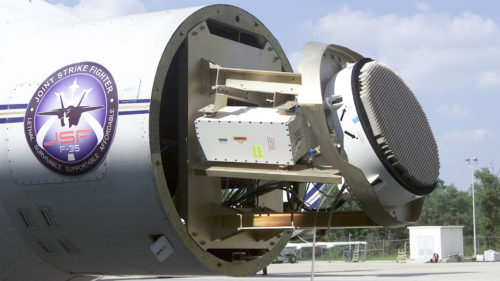

In addition, the APG-83 APAR radar is able to work effectively in “aggressive environments of electronic interference” and has a high resolution in the synthetic aperture mode, in which the clarity of the image plays a decisive role in identifying the target and the accuracy of its destruction. The previous APG-68 F-16 fire control radar could track no more than two objects at a time, and with the new radar, the pilot can “aim at more targets than he can hit.” The more processor power, data processing speed and radar operating modes, the more targets the aircraft can detect, and at greater distances than the old one. National Guard, as well as the possible installation of new radars on a new modification of the F-16 Viper. Initially, it was about 72 F-16 fighters of the U.S.
#RACR RAYTHEON INSTALL#
Department of Defense intended to conclude a contract with Northrop Grumman to install APG-83 Scalable Agile Beam Radar (SABR) radars on fighter jets. Air Force Test Squadron, Edwards Air Force Base in California. The integration and testing were carried out along with the 416th U.S. The first flight test of the radar was performed in 2008. Equipping F-16 fighters with AFAR radar will allow these fourth-generation combat aircraft to have the capabilities of fifth-generation fighters, said Mike Hinkey, vice president of the company.
#RACR RAYTHEON SERIAL#
The company reported that it has already handed over 14 radars for testing and will deliver the first serial radar out of 144 ordered by a foreign client. In 2016, Northrop Grumman began flight testing of the APG-83 SABR airborne radar with an active phased array on the F-16V fighter. It is believed that AN / APG-83 allows the pilot to detect air targets at a distance of up to 370 kilometres. Integrating the APG-83 SABR into the F-16 does not require any major changes to the aircraft design. APG-77 radar is installed on F-22, and the F-35 is equipped with APG-81 radar.

AN / APG-83 SABR AESA radarĪctive phased array antenna equipped AN / APG-83 SABR AESA radar is derived from Northrop Grumman’s radars installed on the F-22 and F-35. Air Force believes that this will keep the F-16 relevant beyond 2025. The aircraft is equipped with the AGCAS Earth Collision Avoidance System, the ALR-69A Radar Exposure Signaling Device, and the Collins Aerospace ARC-210 Satellite Communications System. In addition to the new radar, the modernization of the F-16 fleet includes 13 modifications. The contract was valued at just over $1 billion, and the re-equipment of the aircraft should be completed by 2027. Air Force should receive 372 F-16 Fighting Falcon fighters with the APG-83 SABR installed. Air Force (USAF) and Northrop Grumman signed a contract to organize the production of new radars and their installation on F-16 fighters.
#RACR RAYTHEON UPGRADE#
This upgrade was the latest step in a program to replace the AN/APG-66 and AN/APG-68 pulse-Doppler radars in the F-16 with active phased array (APAR) radars. It is assumed that the upgraded fighters can intercept cruise missiles. Northrop Grumman has equipped 72 F-16 C/D Fighting Falcon fighters of the National Guard with the new AN / APG-83 SABR radar with an active phased array giving it a fifth-generation capability.


 0 kommentar(er)
0 kommentar(er)
